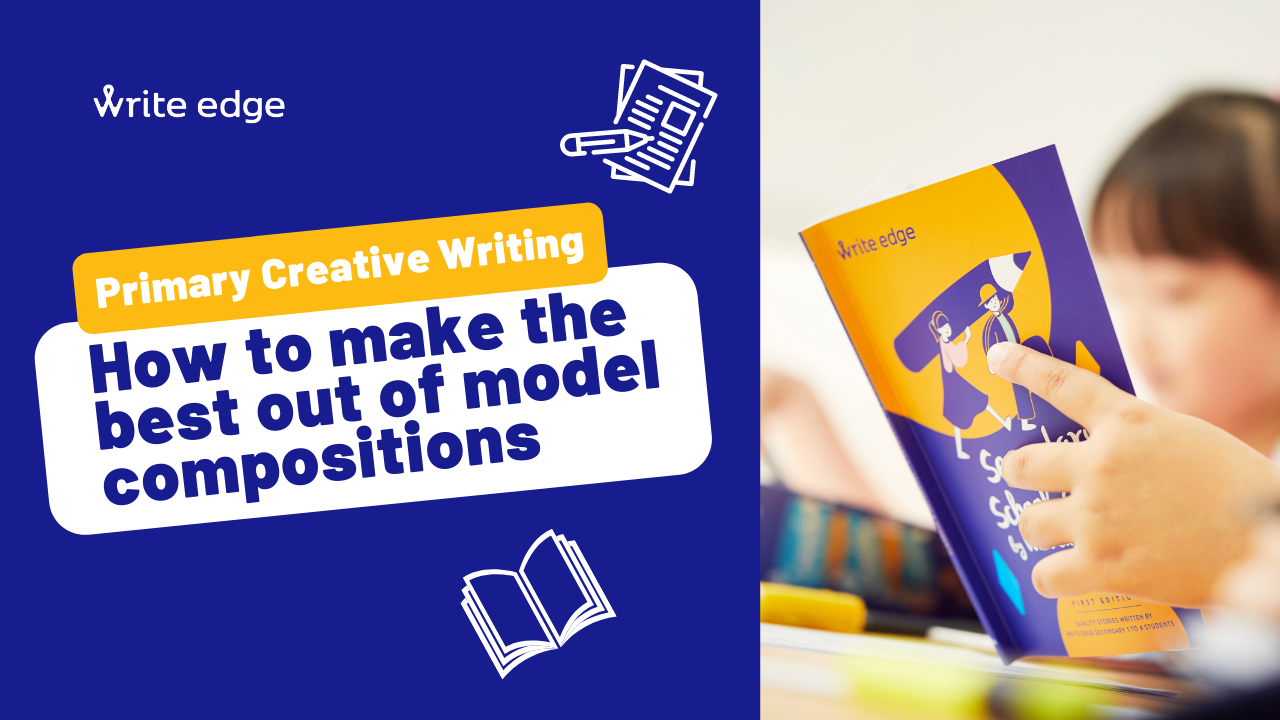One of the surefire ways to grasp effective writing skills to enliven stories is through model compositions. Each one of them is a treasure trove of information on story plots and structures as well as impactful vocabulary. Ironically, model compositions are double-edged tools. How so? On one hand, students become so reliant on them that they tend to ‘borrow’ ideas rather than invent them during the writing process. On the other hand, students use them as the lens to ‘see’ how a story unravels around a particular theme. After all, there are so many writing techniques woven together to form the fabric of a narrative. Against such a scenario, how do we ensure that students have the best of both worlds – gain the benefits of model compositions, yet retain one’s essence of creativity?
Here are 4 useful tips for making the most of model compositions.
#Tip 1: Adopt the 3Rs: Refine, Rephrase, Rewrite. Model compositions have a clear format, namely Introduction, Rising Action, Climax, Falling Action and Conclusion. Let students choose different segments of the model compositions and refine the given ideas in tune with individual creativity. After that, rephrase these refined ideas to exhibit the writing techniques grasped by the students. Lastly, students rewrite the entire segment to reflect both ingenuity of ideas and writing skills. Through this, students get a shot in the arm to write independently.
#Tip 2: Chart different plot plans for the same theme from different perspectives. One glove does not fit all. Similarly, one plot need not fill all narratives. A story’s impact depends largely on a compelling story plot. However, students who read model compositions restrict themselves to a similar story plot for the same theme during independent writing tasks. It is clear that creativity is definitely at a freeze. The pitfalls? Such students flounder if they are exposed to an untried theme. How do we counter this drawback? When students read a model composition based on a particular theme, for example compassion, let them analyse the same theme from different perspectives and brainstorm multiple story plots. Such an exercise broadens the students’ horizons, lending them wings to their imagination and an air of independence.
#Tip 3: Active reading is a necessity in a writer’s journey. Students enhance the 3 important ingredients of writing – grammar, content and language – by reading model compositions. Is this an exaggerated claim? Not really, provided students pay special attention and highlight the following in the course of reading:
•Appropriate grammar usage
•5 senses descriptions
•Different sentence openers
•Main and other characters’ reactions
•Protagonist’s display of emotions
•Figurative language
The result? There is better comprehension of writing techniques, which when applied to narratives, elevates writing skills effectively. Better still, establishing visual displays bearing these highlighted skills and their associated vocabulary becomes a visual treat that is seared in a learner’s memory for a long time.
#Tip 4: Beyond doubt, question words and acronyms are handy tools to generate content. Many a time, when students feel stumped about how to progress a story, these tools form a framework to craft ideas. For this, model compositions can be put to good use since all have coherent storylines with effective breakdown of scenes. By generating what we call ‘5W1H’ questions for the various segments of a model composition, there is clarity in the story flow. Additionally, acronyms are suitably coined to show progression of the story.
For instance, the climax scene, the most exciting segment of a story where plenty of action takes place, can be said to have a ‘HEART’ with the following details:
H- What is Happening? This can be described using imagery.
E- What are the Emotions of the character(s)? Show, not tell.
A- How did the character(s) Act?
R- How did the character(s) React?
T- What were the Thoughts in the main character(s)’ mind(s)?
A model composition is dissected to reflect the above acronym and question words, thus aiding the students in gathering their thoughts and expressing them coherently.
How does Write Edge’s English creative writing class for primary school students stand out? Model compositions pave the way for teaching effective writing skills. The skills are reinforced during the reading process so that students learn to apply them to make their stories come alive. Story segments are rephrased at several junctures. Moreover, independent plot plans are drafted for the same theme to see the story in a different light. Eventually, students gain confidence in writing compellingly and independently. To top it all off, the students’ narratives transform into model compositions by the end of the day. Please visit the given link and enjoy reading our students’ model compositions!
https://www.write-edge.com/the-write-ideas/model-compositions/
If you wish to find out more about the Primary Creative Writing programme at Write Edge, you can reach out to us to arrange a trial class.

